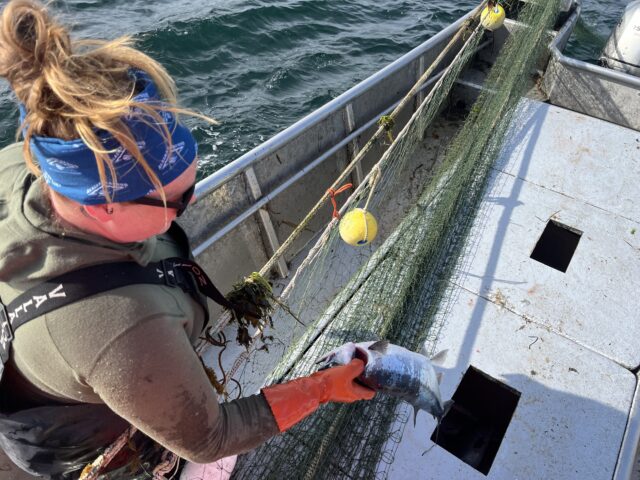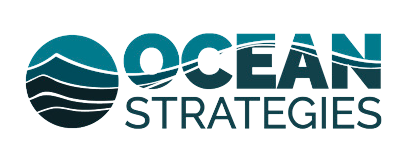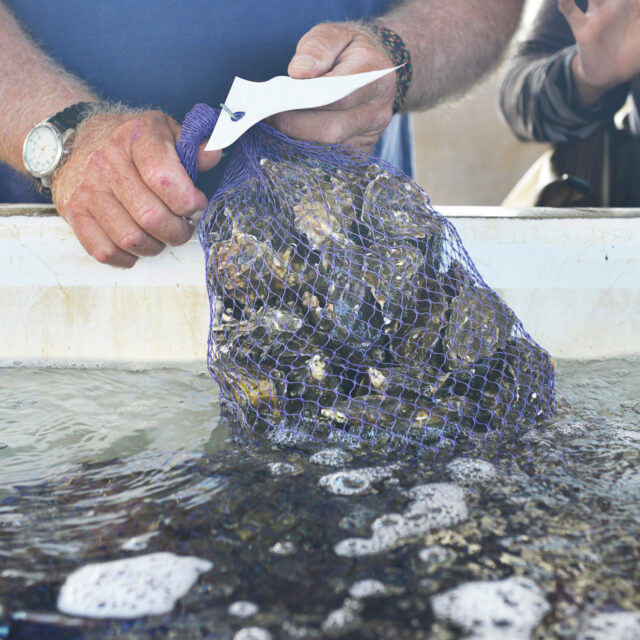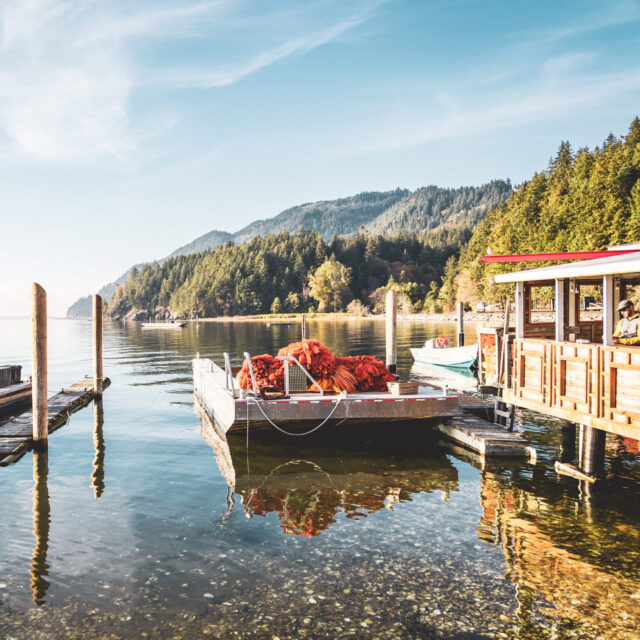Redefining resilience, abundance for a new seafood era
Ocean Strategies Consultant Hannah Heimbuch delivers the third installment of a personal story amid Alaska’s fish processing challenges.
Consider reading her first chapter and second chapter published in April and July of this year to get the full story.

The leaves are turning here in Alaska, and sockeye salmon runs across the state have closed the loop on their spawning lifecycle. Eggs for the next generation are tucked into graveled streambeds, snowfall is creeping down the mountains, and the morning frost has a little more bite to it with each passing day. As a salmon fisherman, getting to autumn is a little like laying down in the grass after running a marathon. I made it over the hills and valleys to the finish line, and though it feels like I could lay down and sleep for a decade, I know before long I need to get up and start preparing for the next race.
The run was rife with uncertainty this year, for us and many others across the state. After our long-time buyer dropped the Alitak setnet fleet from its fisherman roster, we lost the only established means for gearing up remote fishing camps, fueling boats, and selling catch. This has been a pattern across the state, as 3 of Alaska’s largest processors sold or consolidated major assets, and continue to strain under the pressure of market declines and stock fluctuations. The impact to communities – like King Cove, Akhiok, or Chignik – is not a simple or short-term problem.
So how did it go? Sketchy start, but it all came together.
While salmon runs statewide were inconsistent in both returning numbers and fish size (some of our highliner salmon fisheries saw record-small fish this year) 2024’s returning cohort ultimately pulled through for us in Kodiak’s Alitak District. The spring was a chaos of scrapping long-held logistics to make new plans, including establishing a new market with Silver Bay Seafoods in a short-order Hail Mary. Then came an eerily quiet June and July, all of us perched on our beaches wondering if the fish would ever show up. The early run never did materialize, the consequence of a drought that hit the island in 2020 and likely wiped out most of that season’s eggs. (If you don’t have supply chain anxiety, there’s always climate change events…) But one day in August the late-run sockeye poured into the bay, and didn’t stop. Day after day we drove to the net, and gradually replenished our hope, our fish holds, and our freezers. The loan payments got made, another race in the books.
But what does tomorrow look like? Depends on what we prioritize.
For better or worse these shake-ups are trending, across Alaska and in other regions of the country, pushing coastal communities and fishermen to reconsider what resilience and prosperity look like today, and for the years to come. Ecological well-being and biodiversity are fundamental to that resilience, and so are myriad factors of tangible and intangible community infrastructure — port facilities, workforce, market competition, etc. Fishing operations function like a watch, it takes a series of gears working together effectively to make the hands turn. If one of those gears falters, so do the others. Lately, I’ve worked with my colleagues at Ocean Strategies to dig deeper into what makes working waterfronts appealing to a new generation of community-based fishermen and maritime professionals. This made me wonder: How do our fleet’s challenges — and the solutions we came up with — relate to the fundamental priorities of fishing community and workforce resilience?

Problem: Supply Logistics. Without our processor, we lost our typical method of getting supplies before and during the season. This is a remote operation, so that means fuel, food, gear, and other supplies critical to making the operation safe and effective.
Our Solution: Phone a friend. Strategies varied from camp to camp, and for us it was our fishing neighbors that made the difference. A small fleet of Dungeness crab harvesters work the bays around Kodiak Island, and two family operations carried the bulk of our supplies the 120 miles from town on their way between checking pots and delivering crab. A family friend running a tender vessel in the area made sure we got a fuel resupply at a crucial time.
Takeaway: Community-based networks, and assets, are critical to resilience. Inevitably, plans and businesses change. Harvesters with a network to lean on and work collaboratively with are better able to adapt to change. This summer made us painfully aware of our bottleneck points, and even our successful solutions demonstrated a clear reliance on the few people with the resources to move freight, fuel and ice on short notice. We needed each other to make it work, which is why we so often talk about bolstering communities when we talk about keeping our waterfronts working and food systems functioning. In many ways healthy fishing communities approach access and infrastructure as a network of shared resources, rather than privately held assets and commodities alone.
Problem: No buyer.
Our Solution: New processor partner. In a turn of fate that surprised most of us, we were able to reach an agreement with Silver Bay Seafoods to buy our salmon. Because of the late timing of the change, we had to hire our own tender and figure out a lot of logistics independently, but it came together. Largely because community members went to the fisherman-owned company and said it was important, and the SBS team rallied behind us. But that outcome wasn’t a foregone conclusion. Kodiak is one of the largest fishing ports by volume in the country, and yet our processing options were slim to none with OBI dropping the setnet fleet, and Trident (the largest seafood company in the nation) selling its massive Kodiak plant and planning to leave the fishery entirely.
Takeaway: Waterfront diversity gets us through the good, bad and ugly. Waterfronts that turn into a monolithic marketplace run a higher risk of collapse, as do their small-to-medium sized business partners, when there’s big changes afoot. We need multiple processing options, and multiple scales of those options, to diversify products and entry points into the supply chain.

Problem: Low fish numbers. Our early run sockeye was a bust, and while the late run was great, our operation was running out of time to make a season of it before we had to return to the mainland.
Our Solution: Supplemental markets. Remember the dungee boats that brought our supplies out? It turns out we had a resource they needed too — bait. We weren’t personally breaking any records on sockeye harvest, so we had the space on our holding skiffs to fill ice totes with the pink salmon we were also catching. We got a better price selling them directly to the crabbers, and the crabbers got fresh bait without running to town.
Takeaway: Identify and support tools for market pivots particularly suited for small to mid-sized operators. Our pivot was a bait market, some of our salmon neighbors actually went crabbing themselves, others reserved a portion of their catch for direct marketing and worked with a small-scale processor to put up product. These shifts took work and wrangling, but they helped ends meet from beach to beach. Access to things like community cranes, ice totes, cold storage, small-scale processing and resources for gear diversification are just some of the many factors that can empower those pivots.
Resilience isn’t about preventing change, or even preventing crisis. It’s about thriving through change. Crisis gives us an opportunity to reflect on what keeps our working waterfronts working, and our communities strong. Keeping a fleet going has a ripple effect within the port and maritime trades of a community — the welders and mechanics and boat builders. It has a ripple effect out to our food system. It has a ripple effect for the entry-level opportunities available to young people interested in fishing and other marine livelihoods, and among the people actively engaged in stewardship. Our oceans are still abundant, productive, incredible resources, as are the fishing communities that rely on them. But that doesn’t mean we won’t face big changes in how we do business, or how we manage and conserve our abundance. Our job, as we learn to navigate changes in our ecosystems and our communities, is to be a good neighbor to each other, and most importantly, to the fish.




